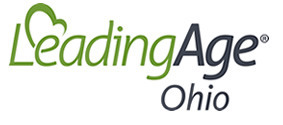|
Late Monday, the Ohio House released the text of House Sub Bill 33, outlining its priorities for the SFY 2024-2025 budget. The bill makes historic investments in Ohio’s long-term services and supports infrastructure, including reimbursement boosts for Ohio nursing facilities, assisted living, and home- and community-based services providers. LeadingAge Ohio is continuing to review the 5000-page bill for items pertinent to aging services providers and will include a complete detailing of the bill in Thursday’s edition of The Source, including details from the comparative document that includes the funding allocations. The following is a preliminary overview of the bill’s contents based on a review of the legislative language.
House Sub Bill 33 includes:
- Nursing home investments. The bill requires the Department of Medicaid to rebase nursing facility rates for SFY 2024 but to distribute funding by 60 percent channeled through the quality incentive payment and 40 percent to support rebasing of the direct care and ancillary cost centers. The bill requires Medicaid to conduct rebasing every two years thereafter. It also raises the direct care threshold from the 25th percentile of the peer group to the median and institutes a new $30 / day private room add-on as well as a 5% deduction from the overall rate for providers with occupancy levels below 65%.
Additionally, the following changes are made to the quality incentive payment:
- For SFY2024, the QIP be calculated based on the four existing measures, plus one additional measure for occupancy which awards 7.5 points to providers whose occupancy was 75% or higher. Occupancy is calculated using days from the previous calendar year and beds as of May 1 of the year in which the payment is calculated.
- For SFY2025, the addition of three new long-stay measures into the quality incentive payment calculation. These are (1) the percentage of long-stay residents whose need for help with ADLs has increased, (2) the percentage of long-stay residents experiencing falls with major injury, and (3) the percentage of long-stay residents who were administered an antipsychotic medication.
- The elimination of the previous exclusion that prevented the lowest 25 percent of facilities with the lowest QIP scores from receiving the QIP payment.
The fiscal impact of the nursing facility package totals well over $700 million in each fiscal year, $250 million of which is the state share.
The House Sub Bill also includes significant ownership disclosures and other new requirements for any nursing home undergoing a change of operator, including requiring a $10,000 bond per licensed bed. LeadingAge Ohio is evaluating this proposal and will include the proposal details in Thursday’s edition of The Source.
- Assisted living waiver reform. The bill both restructures Ohio’s assisted living waiver and corrects the lagging funding for this important benefit, bringing the daily rate for services up to $130 per day. Under the proposal, providers would receive a higher rate for memory care services and for “critical access” payments for those providers that serve high proportions of Medicaid-eligible residents.
- HCBS Workforce payments. The bill includes funding for home- and community-based services direct care workforce wages, raising reimbursement from the $16/hour included in the Executive Budget to $17/hour in SFY 2024 and $18/hour in SFY 2025. The bill language states, “Direct care providers under Ohio’s Medicaid program have been adversely impacted by the COVID-19 pandemic and extraordinary inflationary pressures within the economy. The Department of Medicaid in collaboration with the Department of Aging and the Department of Developmental Disabilities has included funding in the budget to be used for provider rate increases. These provider rate increases shall be used to ensure workforce stability and greater access to care for Medicaid recipients through increased wages and needed workforce supports.”
- Affordable housing. The House Sub Bill preserves language regarding a low-income housing tax credit program as well as language that would provide a standard, statewide system for calculating property value of affordable housing. It also limits allocation of federal low-income housing tax credits and other Ohio Housing Finance Authority assistance to projects approved by county commissioners.
- Healthy Aging grants & senior community services. The House sub bill preserves $40 million for “Healthy Aging” grants to support Ohio’s senior levy programs and bolstering evidence-based home- and community-based supports for older Ohioans not yet eligible for Medicaid. Earlier this year, LeadingAge Ohio coordinated a multi-stakeholder letter to protect this proposal, which is funded through one-time ARPA funding. The House made a modification for the grants to be provided to the county commissioners, council, or other local government. House Sub Bill also preserves funding for HCBS through the Senior Services block grant.
The House Finance Committee now has one week for additional amendments to be proposed for inclusion in the omnibus amendment before the House votes the bill out next week and the process moves to the Senate. As noted, LeadingAge Ohio will include a complete overview of the bill as well as confirm funding allocations for each of these priorities in its Thursday edition of The Source. Members are strongly encouraged to register for this year’s Advocacy Day at the Statehouse, where they will have the opportunity to meet with their legislators as well as the Directors of Medicaid, Health and Aging, to advocate for needed investments in Ohio’s long-term services and supports infrastructure. Additionally, members should plan to join the LeadingAge Ohio All-member call on Monday, April 24, to hear from Health & Human Services Subcommittee Chair Sara Carruthers on subcommittee’s work to support older Ohioans.
Questions may be directed to Susan Wallace at swallace@leadingageohio.org.
|


